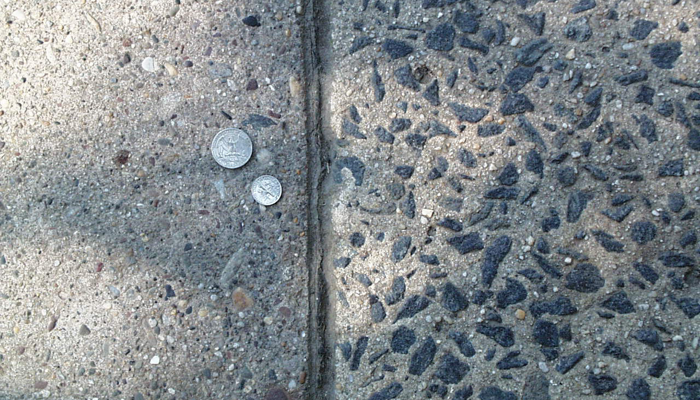
The thesis research of John Valenza revealed the mechanism of salt scaling of concrete. Ice has a much higher thermal expansion coefficient than the concrete on which it forms, so the ice develops tensile stresses as the temperature drops. When the ice cracks, the crack penetrates slightly into the surface of the concrete and removes a small flake of cement, leading to exposure of aggregate (as in the photo above right). The theory is strongly supported by experiments and modeling, as described in detail in several of our recent papers. Zhenhua Sun extended this work by explaining how air entrainment reduces salt scaling damage. Air entrainment results in contraction of concrete when it freezes, because ice in the air voids sucks water from the surrounding mesopores and creates compression. The resulting shrinkage offsets the thermal expansion mismatch between concrete and ice, so that damage is prevented.